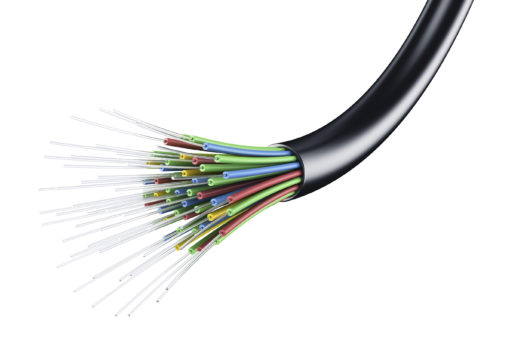
A new generation of cables with a high number of fibres allows the deployment of high-performance optical nets, exploiting the already existing ducts and then avoiding expensive masonry works.
Single-mode optical fibres derive their name from the fact that they transmit a single light beam, or better, the light travels directly along the fibre, perpendicular to the section, and they are ideal for long distances. A typical single-mode fibre has a core diameter that ranges from 8 to 10.5 µm, a cladding of 125 µm and a coating of 250 µm: these parameters have remained unchanged since when these fibres were introduced on the market for the first time in the early Eighties. The standardization of these sizes was fundamental to grant interoperability and coherence in the optical net ambit but it has recently appeared on the market a new generation of single-mode fibres with a protective coating inferior to 200 µm, and this “novelty”, which results in a diameter saving by even 30%, is proving to be very important in the design of more compact cables, permitting an optimization of fibre nets, to full benefit of the players in the telecom field. There are currently two trends in the cabling of state-of-the-art high-performance nets: cables containing few fibres for the connection of single buildings or users, and cables with a high number of fibres to distribute big data volumes. In the second case, we witness a constant rise of the “fibre count”, with cables that can contain up to 500 fibres. This would not represent a problem if there were not some limits imposed by the ducts where the cables must be inserted, often with prefixed sizes. The net operator has then two options: limiting the link fibres or using, with same fibre quantity, a more compact cable type and finally today this is possible with the new generation of single-mode fibres.


